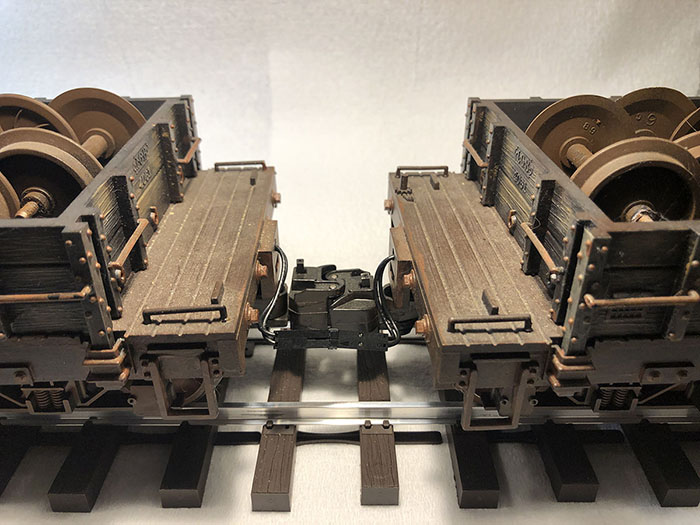
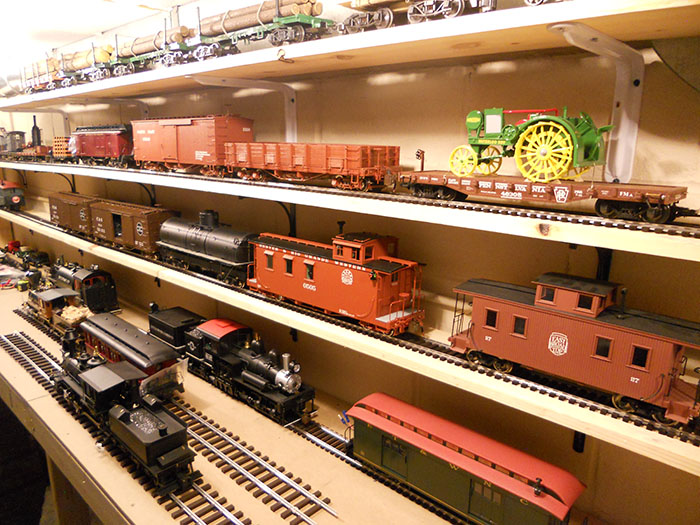
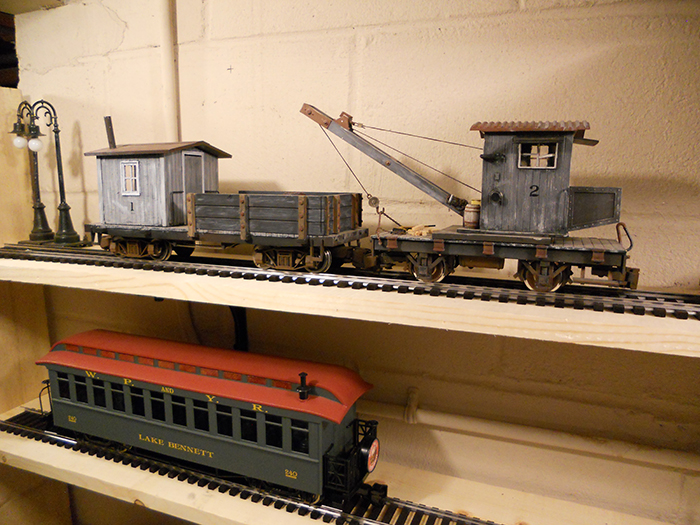



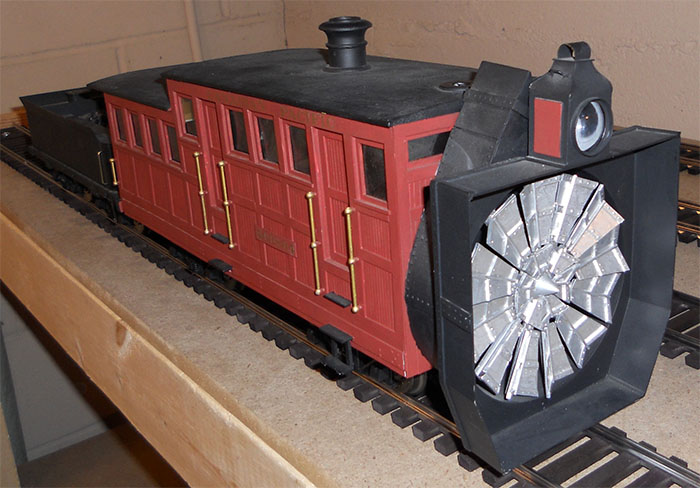
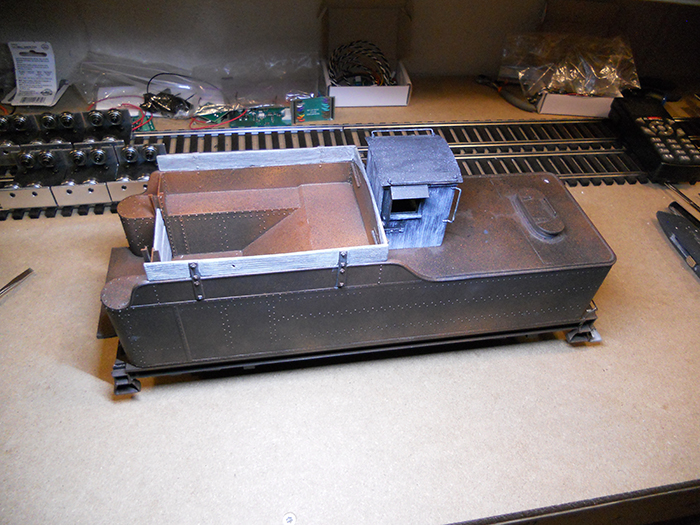
Most pictures you see will have the tender loaded with coal, and for a long time, I thought it was simply the "coal car". But where does the water come from to make steam? Well, that's in the boiler, isn't it? Guess what... it takes 7 times more water than coal to make steam. So notice the empty tender pictured here. That little hopper is where the coal goes. The rest of the car is a giant water tank. And that is what all tenders consist of - big water tank, little coal hopper.
The saddle tank Mallets have their water tanks strapped to the sides of the boiler, and the coal hopper is hung on the back right behind the crew cab. This eliminated the need to have an extra car just for coal and water.
One other note about the tender here. That little doghouse looking thing on top is called exactly that, the "doghouse". The train usually had both a head-end brakeman and a brakeman at the rear of the train. Often, there wasn't a lot of extra room in the cab. The fireman didn't always like to share his seat with the brakeman and there wasn't really enough room to stand without getting in the way of the fireman. The doghouse was added to give the brakeman a place to get out of the way and out of the weather.
